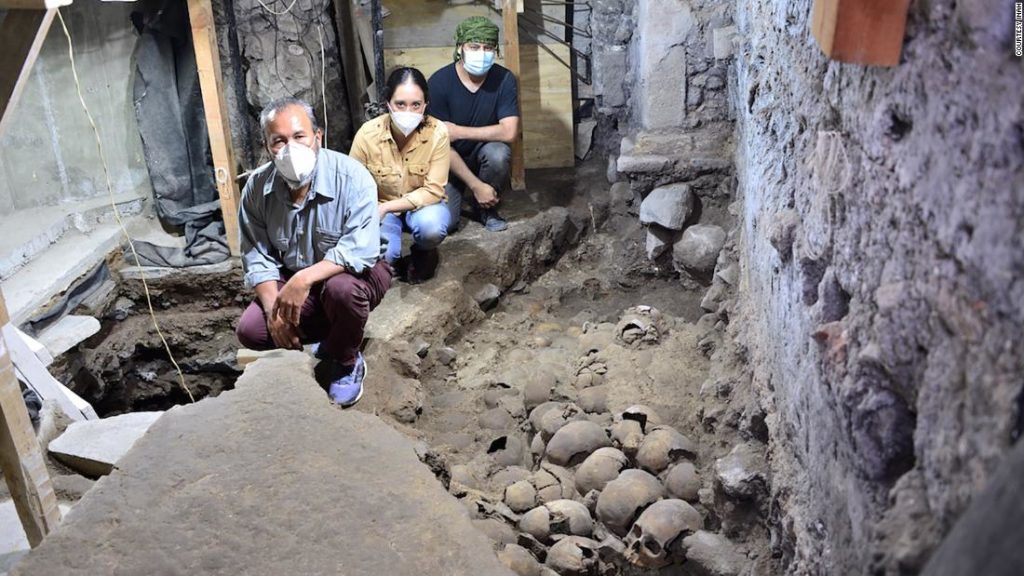(CNN) — Archaeologists have uncovered a new section of a famous Aztec tower of skulls in Mexico City.
A total of 484 skulls had previously been identified at the site, which archeologists say dates back to at least a period between 1486 and 1502.
The newly uncovered wall is comprised of the skulls of men, women and children who were likely killed during ritual sacrifices to the gods, according to the statement. At least three children were discovered among the skulls, identified by their smaller build and developing teeth.

Archaeologist have uncovered an additional 119 human skulls at a site in Mexico City.
Courtesy INAH
The site also indicates that the construction of the towers were part of the “cultural and identity practices” of the Aztecs, according to the INAH release.
Many structures built by the Aztecs in the city of Tenochtitlan, now Mexico City, were destroyed after the city came under control of Spanish soldiers and indigenous allies in the 1500s, the release states.
As a result, many skull towers in the area were razed and scattered fragments have since been recovered by anthropology teams.
Despite their destruction, they left a lasting impression on those that witnessed them, with conquistadors Hernán Cortés and Bernal Díaz del Castillo mentioning them in writings of their conquests, INAH said.
You may also like
-
UK coronavirus variant has been reported in 86 countries, WHO says
-
NASA technology can help save whale sharks says Australian marine biologist and ECOCEAN founder, Brad Norman
-
California Twentynine Palms: Explosives are missing from the nation’s largest Marine Corps base and an investigation is underway
-
Trump unhappy with his impeachment attorney’s performance, sources say
-
Lunar New Year 2021: Ushering in the Year of the Ox

